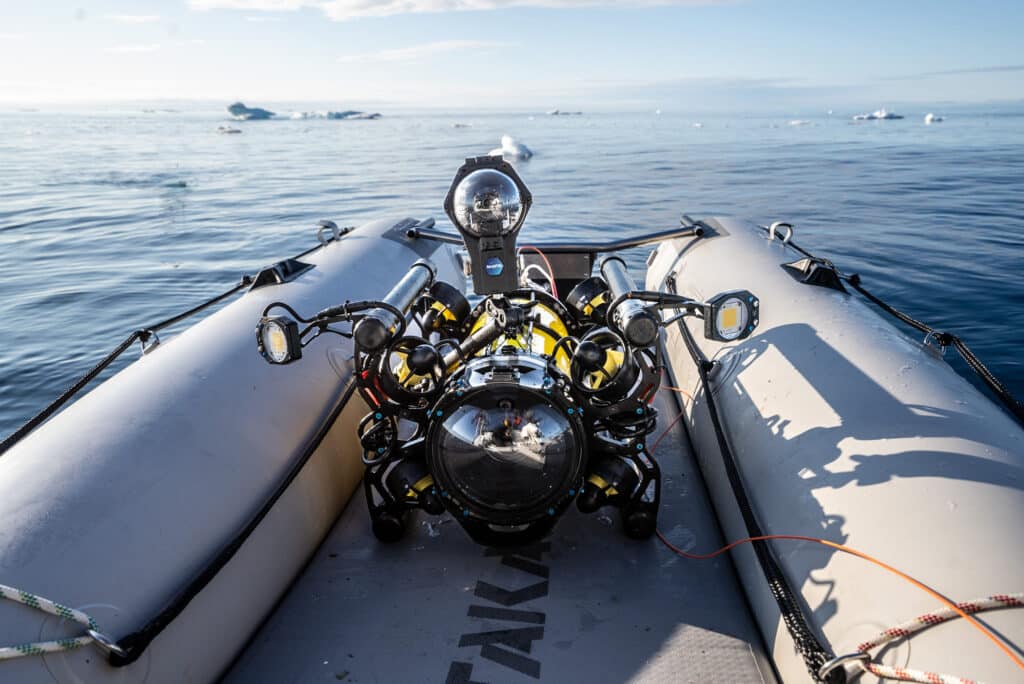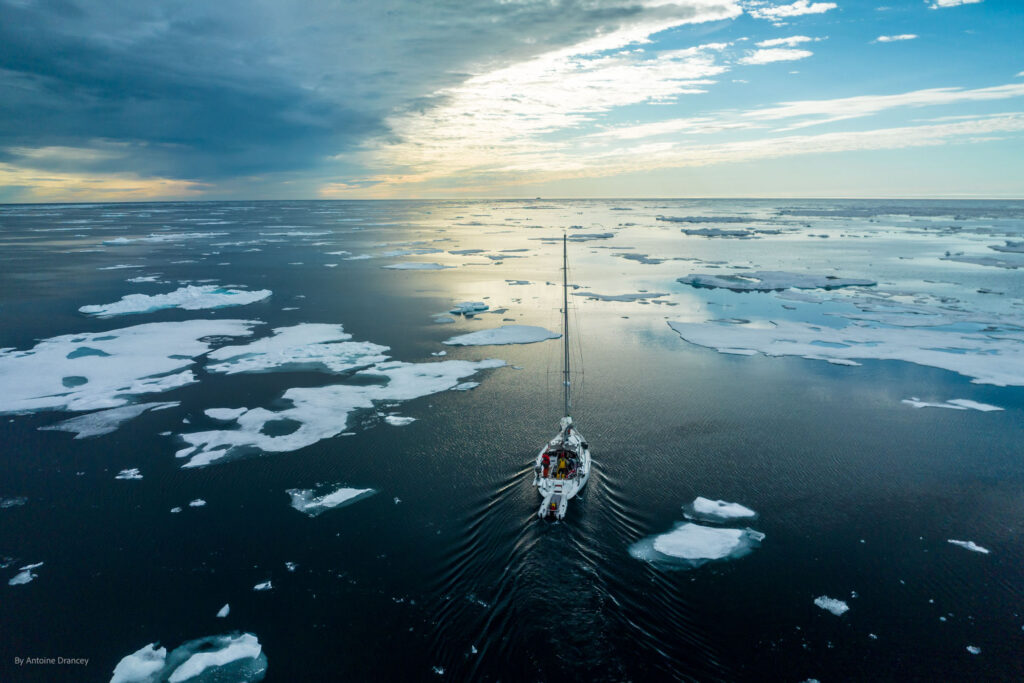The highlight of the 4,500 nautical miles/8,000-kilometer sailing expedition from Stavanger in Southern Norway was reaching the pack ice. At 80 degrees North, the seemingly eternal pack ice stretches all the way to the North Pole. We were equipped with state-of-the-art equipment of all sorts to explore this enthralling landscape. The star of the show was a remotely operated vehicle (ROV), or underwater drone, capable of diving to 500 meters. In addition, various drones, 360 cameras with motion capture, as well as diving gear.
Our greatest advantage, though, was a diversified team consisting of Antoine Drancey from France, an ROV operator, and cinematographer. His fellow countryman, Fabrice Schnoller, a 360 specialist, aquanaut, and whale philosopher. Tawanda Chikasha, an expedition sailor from Zimbabwe. Furthermore, crew member Adelina Manolache, a communications specialist from Romania. Finally, myself, Andreas B. Heide, the caretaker of the bunch, and the captain of the sailing vessel Barba. This was our third expedition to the pack ice. For the crew, it marked the first.

The pack ice is an alluring place. Seemingly calm and gentle, but there is always the risk of getting stuck in the ice. With a fiberglass boat like Barba, the hull can easily get damaged by the compression forces of the ice. At worst, we would need to do what many Arctic explorers in the past have done: shelter on an ice floe and wait for help.
Beyond the obvious reasons, this is a less desirable option as we are not alone here. The pack ice is the hunting grounds for polar bears. The ice itself is a very productive area, bringing with it teeming life with walrus as one of the most noteworthy inhabitants. The walrus can reach 3.4 meters in length and weigh up to 1,500 kgs. Some are very aggressive, and it’s advised against diving with them. They have also been known to attack boats.

In the pack ice, with a curious walrus colony close by, it was Antoine’s time to shine. The ROV provided a safe way to get up close and film these magnificent animals with limited risk.
As for the King of the North, the polar bear, we used a different strategy. Having seen quite a few of them at a distance, we wanted to get closer. The multitalented Fabrice had a plan that seemed simple enough. Use a drone to deploy a 360 camera in an area with polar bears. The camera was activated by motion detection. As for attracting the polar bear, we put our faith in the polar bear’s curiosity. In a hunter’s diary from ancient times, one could read that a simple stick in the snow could be enough to attract a curious polar bear. A copy of the Eiffel tower with a 360 camera did the same trick.
The content we generated is already working its way around the globe in different ways and forms. The 360 video formed part of the video shown to school children and two ministers at Norway’s biggest political conference, “Arendalsuka.” We are working on a film for museums, in addition to doing more live talks to school children from across the globe, as shown in the video with Tawanda in the particular case.
The expedition was a subchapter of the Arctic Sense 2023 expedition, which you can read more about here.
Andreas
